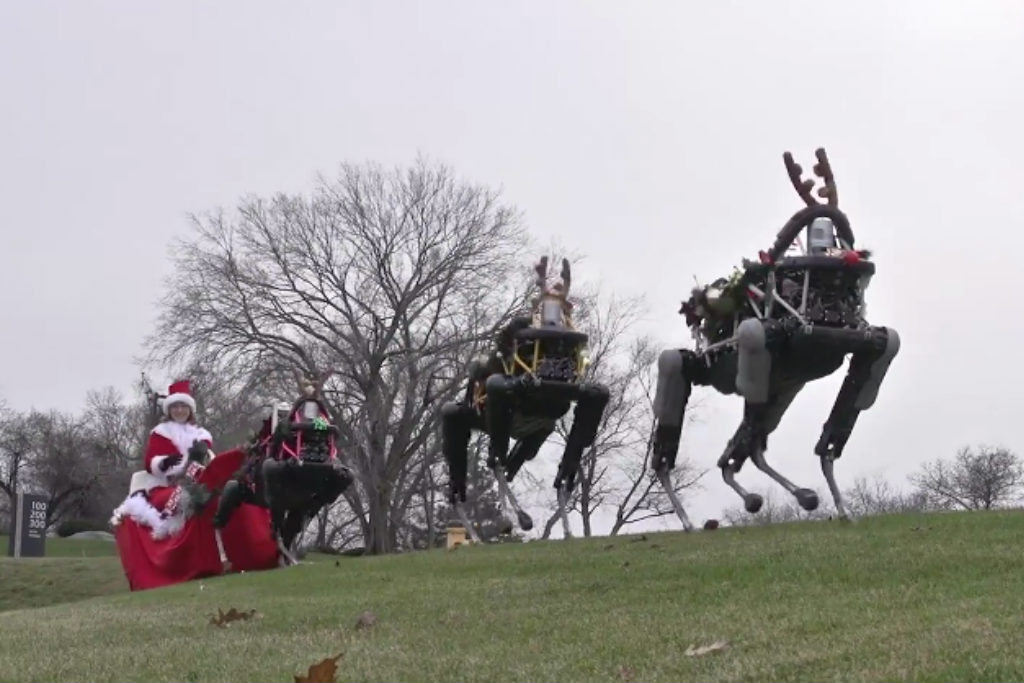Why Is The Doorknob-Turning Dog Robot So Damn Unsettling? A Deeply Unscientific Investigation
It's not possible to describe the wrongness of it in words, but we tried.

Today, scary robot-making company Boston Dynamics burst back onto the scene with an update: they’ve now got a robot that can open doors.
Responses to the robot from the general public were, as usual, mixed — a skim of my social media feeds reveals a split of around 80% “holy fuck this is the most terrifying thing I’ve seen in my life” and 20% tech nerds praising the extreme genius behind the development.
Personally, I feel that these responses can coexist: while it’s undoubtedly a really cool and clever achievement, it’s also deeply, profoundly unsettling to watch. Looking at the video of it makes my skin crawl while something inside me kind of scrunches, withers and dies. It’s uncomfortable, and in this article I’m going to try very hard to articulate why.
Before we begin, though, take a second to get up to speed (and into a suitably unsettled frame of mind), by watching the video below.
There’s a lot to unpack here, so let’s start with Robot #1. Right from the get-go, the way it moves is…uncomfortable.
I mean, it’s come a long way since 2013’s “galloping” WildCat (see below), but there’s still something deeply unnatural about that movement. Which makes sense: it’s a fucking robot.
Being better than the WildCat doesn’t make watching the dog robot comfortable. Not even close. Maybe it’s that its “torso” is so long yet so rigid, forcing it to prance unsettlingly from the legs alone. That way it primly and precisely places its “feet” while its “knees” remain so aggressively bent evokes someone both strutting and squatting, simultaneously.
Imagine, for a moment, a human doing that — waddling forward from a deep squat as their torso remains utterly straight, as if standing to attention, and doing it headless.
Sadly, Robot #1 doesn’t stop there. Upon approaching the door that it cannot open, it then kind of dry-humps the air to call for help, raising its “torso” in such a way as to highlight its headlessness. We have barely a second to process how horrifying this bit is, though, because in strut-squats Robot #2.
LET ME BE FIRST TO PLEDGE FEALTY TO OUR GIANT ROBOT SCORPION DOG OVERLORDS AND TO DENOUNCE ALL HUMANS WHO WOULD DENY THEM THEIR RIGHTFUL PLACE AS OUR MASTERS.
— matt blaze (@mattblaze) February 13, 2018
Robot #2 is a whole new kind of beast. It’s got the familiar walk, sure, but it’s also got something sitting on top of it. Is it a head? Is it a weapon? It gets closer, and we find out: it is neither and both. It’s a weird kind of appendage that reaches out to grasp the doorknob and awkwardly but efficiently manoeuvre itself and its appendage-less friend to freedom.
What exactly this appendage is is up for debate. As a very distressing tweet from ABC Science asks, does the robot open the door with its hand or its face? Or have we just begun to enter a new age, where robots are no longer gently anthropomorphised, and instead just look, walk, and move however they need to to meet their terrifying new KPIs.
Leave us your takes in the comments, and stay safe out there in this brave new world.
counterpoint:
the robot dog
is a good boy
— ಠ_ಠ (@MikeIsaac) February 12, 2018
